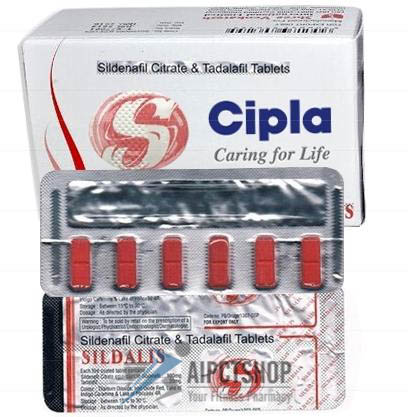Subtotal: $5.50
How is Hormone Therapy Used in Treating Breast Cancer (Part II)

As with all other drug medications when used to treat the conditions facing them, it inevitably becomes necessary and indeed sometimes essential that as a medical healthcare provider or an ordinary person trying to gain some understanding of a healing process, you need to get some firm footing on both treatment and infestation. Here we are concerned specifically on the subject of hormonal therapy and its use in treating breast cancer so let’s get into it right away.
Using hormone therapy for treating breast cancer
Essentially, three main methods are used when treating breast cancer that’s hormone-sensitive.
Adjuvant therapy for early-stage breast cancer:
FDA approved tamoxifen is the prescribed treatment for adjuvant hormone treatment in premenopausaland postmenopausalwomen, who have ER positive early-stage breast cancer development.
The use of aromatase inhibitors anastrozole, letrozole, and exemestaneare also approved for this use in postmenopausal women,
Research proven results have shown that women who undergo treatment of adjuvant therapy with tamoxifen following surgery for ER-positive breast cancer for a minimum of five years actually reduced the risks of recurring breast cancer as well as the prevention of breast cancer in the other breast.
In the past, most women undergoing treatment for adjuvant hormone therapy to prevent a recurrence of breast cancer were required to take tamoxifen each day for 5 years.
However, newer hormone therapies have been introduced (aromatase inhibitors) some of which are as effective as tamoxifen, other approaches to hormone therapy have been more common.
For instance, now women can take an aromatase inhibitor and not tamoxifen every day for 5 years. Others may opt to receive an additional 5 years of aromatase inhibitor following 5 years of taking tamoxifen.
In other cases, woman can switch to an aromatase inhibitor after taking tamoxifen for 2 or 3 years for 5 years or more of hormone therapy.
For postmenopausal women, subjected to treatment for early-stage breast cancer, further treatment with adjuvant therapy with an aromatase inhibitor can reduce the risk of recurrence and improve overall survival when compared with a treatment of adjuvant tamoxifen.
For some premenopausal women who have early-stage ER-positive breast cancer, can experience ovarian suppressionas well as aromatase inhibitor that resulted in a higher degree of freedom from recurring breast cancer as compared to an ovarian suppression together with tamoxifen or this drug medication on its own.
In the case of men who had early-stage ER-positive breast cancer and receiving adjuvant therapy usually find they are initially treated with tamoxifen, while those treated with an aromatase inhibiter also find they also have to take a GnRH agonist.
It’s a complicated task to decide on the type and timeframe of adjuvant hormone therapy and it should be done on the basis of each individual case during discussions with an oncologist.
Advanced or metastatic breast cancer treatment:
Certain types of hormone therapy can be used for the treatment of metastatic or recurring hormone-sensitive breast cancer.
Hormone therapy may also be used as an alternative treatment for ER-positive breast cancer that has once again recurred in the breast, chest wall, or adjacent lymph nodes following treatment also referred to as loco-regional recurrence.
The two SERMs (tamoxifen and toremifene) are approved for treating metastatic (recurring) breast cancer.
The anti-estrogen fulvestrant is approved for the treatment of postmenopausal women with metastatic ER-positive breast cancer which has spread even after being treated with other anti-estrogens.
The same treatment (fulvestrant) can also be used in for treating postmenopausal women with HR-positive, HER2-negative locally advanced or metastatic breast cancer not previously treated with hormone therapy.
The treatment can also be used in premenopausal women who have had ovarian ablation.
Approved aromatase inhibitors, anastrozole and letrozole can be used for postmenopausal women as their initial treatment for metastatic or locally advanced hormone-sensitive breast cancer.
Both these drugs along with the aromatase inhibitor exemestane also approved for the treatment of postmenopausal women who have advanced breast cancer which has worsened following treatment with tamoxifen.
Men suffering from advanced breast cancer who received treatment with an aromatase inhibitor are also given a GnRH agonist.
Can Hormone therapy prevent breast cancer?
Yes is the answer. It’s true to say that the majority of breast cancers are ER positive and clinical trials have been conducted to establish whether hormone therapy can be used to stop breast cancer in women who have a greater risk of falling victim to the disease.
A large randomized clinical trial, the Breast Cancer Prevention Trial found that after being taken for 5 years, tamoxifen could reduce the risk of invasive breast cancer development by approximately 50% in postmenopausal women with greater risk for getting the disease.
Long-term monitoring and follow up action for another randomized trial known as the International Breast Cancer Intervention Study I, concluded that 5 years of treatment with tamoxifen was able to reduce the incidence of breast cancer for about 20 years.
Next was another big randomized trial called the Study of Tamoxifen and Raloxifene, which found that taking raloxifene (a SERM) resulted in reducing the risk of breast cancer in postmenopausal women by about 38%.
The result of the large trials was the approval of both tamoxifen and raloxifene by the FDA for their ability in reducing the risk of breast cancer development in women who had a high risk of developing breast cancer.
More important was the approval of tamoxifen to be used irrespective of the menopausal status of women. Raloxifene on the other hand was approved only for use in postmenopausal women.
Other interesting findings have been on aromatase inhibitors – exemestane and anastrozole – which have been found to reduce the risk of breast cancer in postmenopausal women with a risk of getting the disease.
Following 3 years of a randomized trial, it was found that women who took exemestane were 65% less likely to develop breast cancer than those who took a placebo.
In another randomized trial of 7 years in duration, women who took anastrozole were 50% were less likely to develop breast cancer than those who took placebo.
It was also found that even though FDA approved aromatase inhibitors, exemstane and anastrozole could be used for treating women with ER-positive breast cancer, both have not been specifically approved for preventing breast cancer.
Conclusion
We have fully covered the most important aspects connected with the use of hormone therapy for the treatment of breast cancer. The journey has not been easy but it has been a worthwhile venture of discovery and understanding. We’ve also discovered one very important role played by the FDA in authorizing the different types of treatments that have an effective role in controlling breast cancer through the use of different drug medications.

 Sildalist 100 Mg 20 Mg Kamagra and Cialis Mix - 6 tablet
Sildalist 100 Mg 20 Mg Kamagra and Cialis Mix - 6 tablet